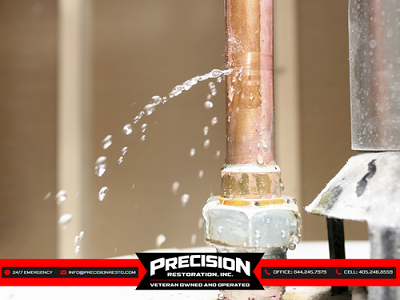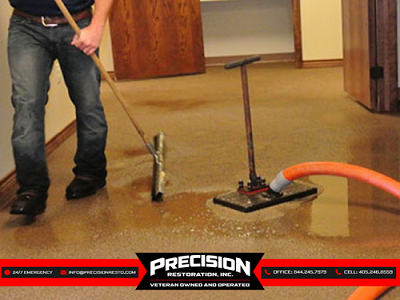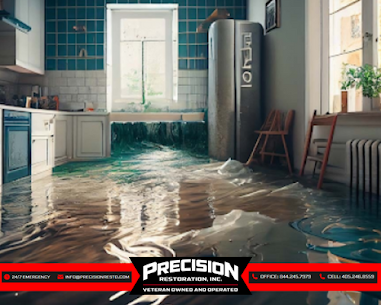Water damage is a serious concern for homeowners, leading to costly repairs and potential health hazards. Understanding the common causes of water damage and implementing preventive measures can help safeguard your property and minimize the risk of extensive damage. Here’s a closer look at the top causes of water damage and practical steps to prevent them.
Leaky Roofs
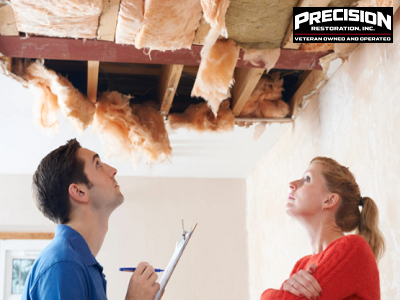
Cause: A leaky roof can result from aging materials, storm damage, or improper installation. Common issues include missing or damaged shingles, broken flashing, or clogged roof valleys. Over time, even small leaks can lead to significant damage in your attic, walls, and insulation, fostering mold growth and structural problems.
Schedule annual roof inspections, especially after severe weather. Clean and maintain gutters to ensure proper water flow. Promptly address damaged or missing shingles and flashing. Consider applying a roof sealant for added protection against leaks. Regular maintenance helps extend the life of your roof and prevent costly repairs.
By taking these preventive measures, you can significantly reduce the risk of a leaky roof, protecting your home from water damage and extending the lifespan of your roofing system. Regular maintenance and prompt attention to minor issues can save you from more extensive and costly repairs in the future.
Faulty Plumbing
Cause: Faulty plumbing, including burst pipes, leaking faucets, or clogged drains, often arises from aging infrastructure, high water pressure, or freezing temperatures. These issues can cause significant water damage, potentially affecting walls, floors, and ceilings. Perform routine inspections and maintenance of your plumbing system. Insulate pipes in colder areas to prevent freezing. Regularly check for leaks around faucets and under sinks. Install a water pressure regulator to avoid excessive pressure on pipes. Address minor plumbing issues before they escalate into major problems.
By taking these preventive measures, you can reduce the risk of faulty plumbing causing water damage in your home. Regular maintenance and prompt repairs are key to keeping your plumbing system in good working order and avoiding costly water damage.
Appliance Failures
Cause: Major home appliances like washing machines, dishwashers, and water heaters can fail and leak, causing water damage. Issues often stem from wear and tear, faulty connections, or manufacturing defects.
Prevention: Follow the manufacturer’s maintenance recommendations for each appliance. Regularly inspect appliance hoses and connections for signs of wear or leaks. Install automatic shut-off valves or leak detectors to quickly address issues. Promptly repair or replace faulty appliances to avoid water damage.
Clogged Gutters
Cause: Clogged gutters prevent proper water drainage, leading to overflow that can damage your home’s foundation and walls. Debris like leaves and twigs can obstruct water flow, causing it to pool and potentially seep into your home.
Prevention: Clean gutters and downspouts at least twice a year, especially during fall when leaves are abundant. Install gutter guards to reduce debris buildup and minimize cleaning frequency. Ensure downspouts direct water away from the foundation to prevent pooling around your home.
Foundation Cracks
Cause: Cracks in the foundation allow water to seep into basements or crawl spaces, often resulting from soil settlement, poor drainage, or expanding and contracting soil. These cracks can lead to significant structural damage over time.
Prevention: Regularly inspect your foundation for cracks and address them promptly. Improve drainage around your home by grading the soil away from the foundation.
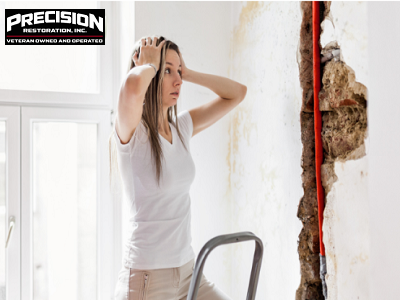
Seal small cracks with a waterproof sealant to prevent further water infiltration. Professional assessment can help manage and repair larger issues.
Poor Drainage Systems
Cause: Ineffective drainage systems can cause water to pool around your home, eventually seeping into the foundation and causing damage. This problem is often due to improper grading, clogged drains, or faulty installation.
Prevention: Ensure landscaping and grading direct water away from your home’s foundation. Regularly inspect and maintain drainage systems like French drains and sump pumps. Clean and clear any blockages in drainage paths. Properly installed and maintained systems help prevent water damage and foundation issues.
Sewer Backups
Cause: Sewer backups occur when blockages in the main sewer line or municipal system cause sewage to flow back into your home. This can lead to severe water damage and health hazards.
Prevention: Avoid flushing non-dissolvable items like wipes, grease, and hygiene products. Install a backflow prevention valve to prevent sewage from entering your home. Schedule regular inspections and maintenance of your sewer lines to address potential blockages before they cause backups.
Natural Disasters
Cause: Natural disasters such as floods, hurricanes, and heavy rainstorms can overwhelm your home’s defenses, leading to significant water damage. These events often cause widespread flooding and water intrusion. Prepare an emergency kit with essential supplies for severe weather. Install flood barriers or sandbags to protect entry points. Elevate electrical appliances and utilities above potential flood levels. Consider purchasing flood insurance to mitigate financial losses from natural disasters.
Emergency Preparedness
Develop a comprehensive emergency plan that includes evacuation routes, a communication strategy, and a supply kit with essentials such as food, water, medications, and important documents. Ensure that all family members are aware of and understand the plan.
Flood Barriers and Sandbags
Invest in flood barriers or sandbags to protect vulnerable entry points, such as doors and windows, during expected flooding. These barriers can help redirect water away from your home and reduce the risk of water intrusion.
Elevate Utilities
Raise electrical systems, HVAC units, and appliances above potential flood levels. Installing these components on elevated platforms can prevent water damage and maintain functionality during and after a disaster.
Strengthen Structure
Reinforce your home’s structural integrity to withstand high winds and heavy rains. Install impact-resistant windows and doors, secure your roof with hurricane straps, and consider reinforcing your foundation to resist flooding and shifting.
Landscaping and Drainage
Maintain proper landscaping to direct water away from your home’s foundation. Use graded landscaping and install proper drainage systems, such as French drains, to manage water flow and reduce the risk of flooding around your property.
Conclusion
Understanding the top causes of water damage is crucial for protecting your property and minimizing repair costs. From faulty plumbing and roof leaks to poor drainage and appliance malfunctions, proactive measures can make a significant difference. Regular maintenance and timely repairs are essential in preventing water damage and ensuring the longevity of your property. By staying vigilant and addressing potential issues promptly, you can safeguard your home or business from the costly consequences of water damage.
At Precision Restoration, Inc., we are committed to helping Oklahoma City residents protect their properties from water damage. Our team of experts is here to provide tailored solutions and expert advice to address any water-related concerns. Whether you need an inspection or restoration services, we’re ready to assist in keeping your space safe and dry.

